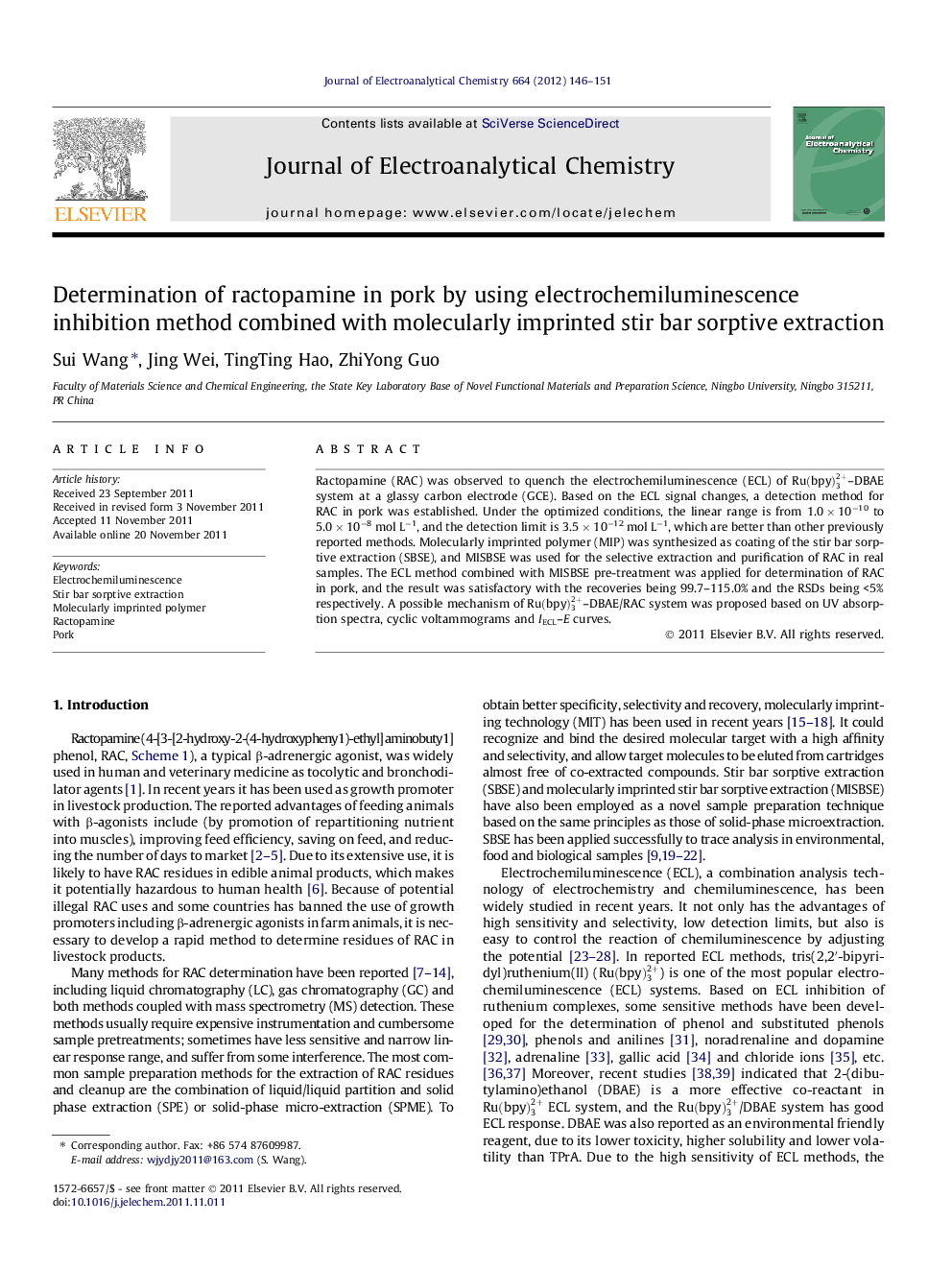| Article ID | Journal | Published Year | Pages | File Type |
|---|---|---|---|---|
| 219472 | Journal of Electroanalytical Chemistry | 2012 | 6 Pages |
Ractopamine (RAC) was observed to quench the electrochemiluminescence (ECL) of Ru(bpy)32+–DBAE system at a glassy carbon electrode (GCE). Based on the ECL signal changes, a detection method for RAC in pork was established. Under the optimized conditions, the linear range is from 1.0 × 10−10 to 5.0 × 10−8 mol L−1, and the detection limit is 3.5 × 10−12 mol L−1, which are better than other previously reported methods. Molecularly imprinted polymer (MIP) was synthesized as coating of the stir bar sorptive extraction (SBSE), and MISBSE was used for the selective extraction and purification of RAC in real samples. The ECL method combined with MISBSE pre-treatment was applied for determination of RAC in pork, and the result was satisfactory with the recoveries being 99.7–115.0% and the RSDs being <5% respectively. A possible mechanism of Ru(bpy)32+–DBAE/RAC system was proposed based on UV absorption spectra, cyclic voltammograms and IECL–E curves.
Graphical abstractFigure optionsDownload full-size imageDownload as PowerPoint slideHighlights► Ractopamine can quench the electrochemiluminescence of Ru(bpy)32+–DBAE system. ► ECL method for RAC determination was better than others in terms of sensitivity. ► Molecularly imprinted stir bar sorptive extraction was used for sample pretreatment. ► UV absorption spectra, cyclic voltammograms and IECL–E curves were examined. ► The quenching mechanism was the competition of the active free radicals.
